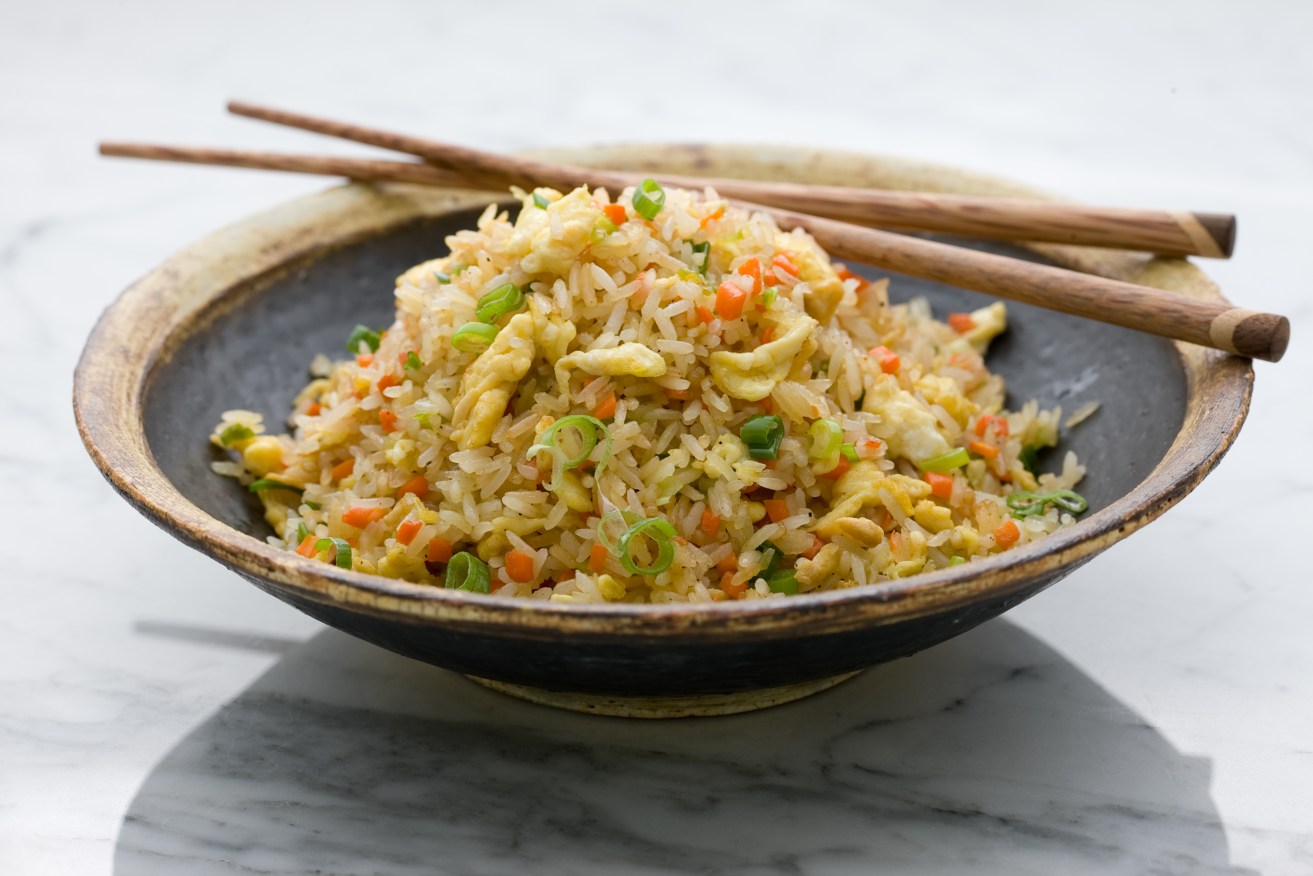‘Fried rice syndrome’: How to stop leftovers killing you


Looks great. But if it's cooked with rice that's been left to cool on the stove, it's probably poisonous.
You might think that “fried rice syndrome” is that crazy state when you’ve had a few beers and experience a revelation.
There’s bacon and eggs in the fridge. Peas and corn kernels in the freezer. Soy sauce in the cupboard. Half an onion somewhere to be diced. And half a pot of rice left-over from dinner.
Woo hoo!
Time to grab a wok, fry up the bits and pieces (bacon first!), stir the rice through and leave it to cook through until it gets crunchy on the bottom and steamy. Makes it safe, right?
At least it tasted good
And then an hour passes. Or maybe six hours. You’re asleep and then waking in horror to find you’re singing a duet from both ends.
What’s going on? A common form of food poisoning known as… ‘fried rice syndrome’.
You’ll get over it, most likely.
Here’s where you went wrong
Often, uncooked rice, poured from the packet, is contaminated with Bacillus cereus, a bacteria common in soil and dust.
These bacteria can form protective spores that survive the cooking process. Strictly speaking, these spores aren’t the problem.
The real trouble starts if you allow the rice to cool slowly and then let it sit for a couple of hours, between 5 °C and 60 °C.
In this warm, moist environment, the bacteria spores germinate, grow and produce a toxin that causes vomiting.
There is no way of telling if cooked rice is contaminated with Bacillus cereus. It won’t look, taste or smell different to normal rice.
The danger is you’ve left it sitting to fester.
Reheating cooked rice won’t kill the spores or any toxins.
If you’ve left a pot of cooked rice sitting on the stove or counter for just an hour, throw it out.
But I want to save it for fried rice!
If that’s the case, put the left-overs in the fridge immediately after serving up dinner.
If there’s a lot of left-over rice, break it up into smaller portions and store in clean, shallow containers less than 10cm deep.
Don’t stack the containers on top of one another. This will cause the heat to dissipate slowly. You want it to cool quickly.
Speaking more broadly about left-over hot-foods: don’t leave them sitting on the bench or cooling slowly in the oven. Put them in the fridge directly or rapidly chill them in an ice bath.
If this sounds like too much trouble, then get set for a potentially horrible night.
Anyone can get sick with Bacillus cereus and most will recover quickly.
But vulnerable people – young children, pregnant women, the elderly) and people with weak immune systems – can become seriously ill.
Also, it’s not only rice that can be contaminated with the spores.
According to Foods Standard Australia, foods at higher risk of contamination include pre-cooked starchy foods like rice, pasta and cereals. Pre-cooked mixed dishes, especially dishes with spices, are also vulnerable.
Hang on…
Couldn’t all angst be avoided by washing the rice grains before cooking? Can’t the spores be simply rinsed off?
Alas, no. Washing the rice won’t remove the spores, just as cooking the rice won’t kill them. They take root and that’s that.
But, they only become harmful when the cooked rice is left to cool at room temperature.
However, washing rice ahead of cooking is worthwhile, because it rids the grains of some of the sugary starch that isn’t good for you.
But don’t wash if you’re making risotto or paella and want the grains to stick together creamily.








